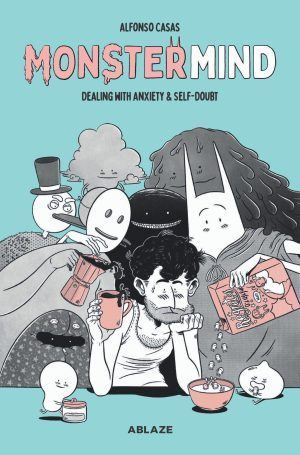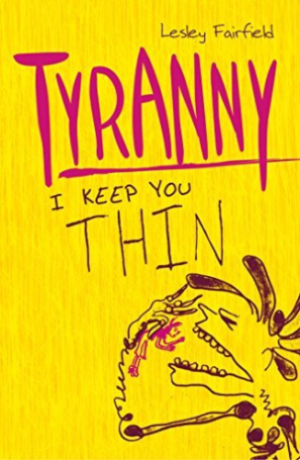Review by Ian Keogh
Until he was nineteen Fernando Balius felt well adjusted and normal, although writing Traces of Madness aged 35 he concedes there may have been earlier signs. Whether intentional or otherwise, although Balius takes a very direct first person approach, an early statement is his noting he’s not going to give his name. So is it his story at all? Online interviews promoting the Spanish edition confirm it is.
It’s a grim story. There had been unfortunate episodes in childhood, but it wasn’t until his late teens in London that Balius began hearing voices in his head, personified by the creature seen on the sample art. Additionally he became convinced he could tune into what other people were thinking, and they all wanted to reject him.
This isn’t a narrative that greatly suits visual depiction, as it’s very much about thoughts and feelings. Artist Mario Pellejer’s way around this drawback is to repeatedly draw Balius as alone and isolated and in a form of scratchy immediacy as if drawn by Balius at the time he was experiencing assorted depressive and psychotic feelings. At times visual metaphors are used, with waves frequently seen. It’s not pretty, but it’s not intended to be. Even accounting for that, though, the illustrations are poor in places, people poorly defined and not enough imagination.
Balius is very matter of fact in places, especially when it comes to discussing his symptoms and feelings at any particular time, which no matter how strange they may seem when reading, were real to him at the time. It’s an effective form of transmission, and ought to lead to some understanding of what was eventually diagnosed as schizophrenia, what would now be defined as a bipolar disorder. We tend to think of that as purely mental, but Balius points out how any form of mental condition also has physical manifestations.
Bipolar disorder is a condition that can’t as yet be cured, but medical controls can supply a more consistent and improved life. It also helps if close relatives are more understanding than Balius’s parents, whose callous refusal to discuss anything leads to repressed guilt. He notes a sense of a humour is nonetheless essential, not only for the person with the condition, but those around them, although appreciates it’s a fine line differentiating laughing at someone and with them. It’s going to be a delicate subject to approach, that’s for sure. It represents the total honesty transmitting throughout, Balius relating horrible experiences most of us can’t imagine happening to us. However, his aren’t the only circumstances related here.
Whether the coping mechanisms Balius has developed are personal to him or have wider application is uncertain, but he has credible and interesting comments that can’t be dismissed as part of his condition. He doesn’t say so explicitly, but sees mental illness as a scale, and his one absolute is that the support of friends is essential.
Traces of Madness is touching, heartbreaking and very readable for anyone wanting to investigate personal experience, a reader for instance who may want an insight into someone they know unable to explain their feelings as lucidly. An appendix provides a useful summary, but a better artist could have ensured a greater audience.





